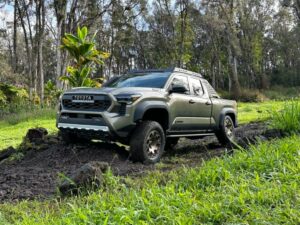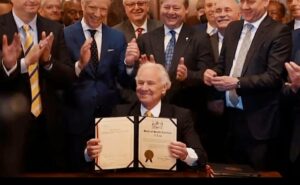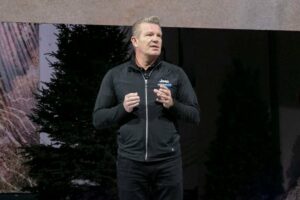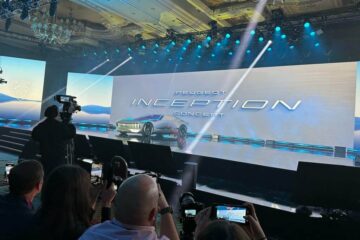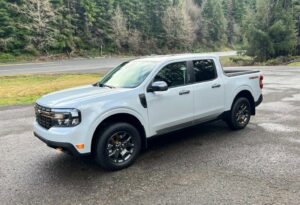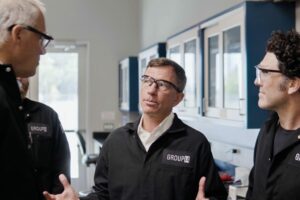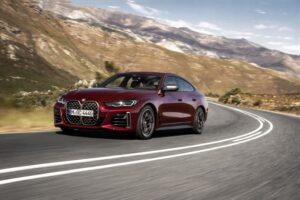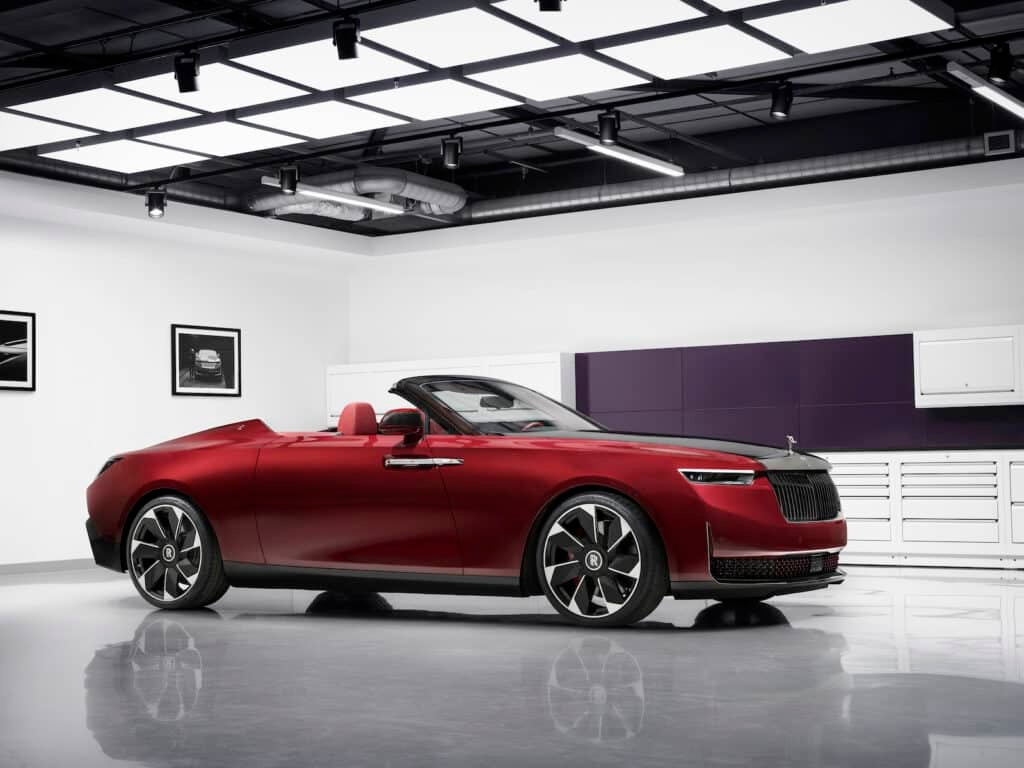
Rolls-Royce unveiled its newest vehicle Saturday, the Droptail, a two-seat roadster and just the sort of car you’d never expect from Rolls-Royce. At least not in this century.
Rolls-Royce continues to satiate its customers’ wishes for the highest level of personalization with the creation of an entirely unique vehicle. Dubbed Coachbuild, it enables the automaker’s wealthiest clients to cooperate on the design of an entirely bespoke car.
“Our dedicated Coachbuild department is the only place in the world where true patrons of luxury can create a motor car not for their image, but in their image,” Torsten Müller-Ötvös, Chief Executive Officer, Rolls-Royce Motor Cars. “These extraordinary products are roadgoing expressions of applied art, built from the ground up over more than four years in collaboration with a small constellation of our most ambitious clients.”
Their newest custom
The newly revealed model is dubbed the Rolls-Royce La Rose Noire Droptail, the third bespoke model to emanate from Coachbuild.
Revitalize the craft of coachbuilding began in 2017 in response to a client’s request. It yielded the Sweptail, mirroring its customers’ passion of entertaining. Now come the Droptail, of which Rolls-Royce will build four.

For the Droptail, designers went into the company archives, looking back at the coach-built roadsters typically ordered by Americans, including the 1912 Rolls-Royce Silver Ghost ‘Sluggard’, the 1930 Rolls-Royce Phantom Brewster New York Roadster and the 1925 Rolls-Royce Silver Ghost Piccadilly.
But if you think this roadster is small, guess again, as its nearly 209 inches long and 79 inches wide.
But the Droptail also gave designers a chance to revise the marque’s trademark Pantheon grille, with vanes that are slightly kinked, lending it a more relaxed aura.
The car’s rear deck is more than decorative, designed to produce downforce without a rear spoiler. In response to a client’s request, only the door handles, Spirit of Ecstasy and Rolls-Royce monogram interrupt the rear deck’s surfaces. Rear lighting is canted forward, accentuating the car’s sense of motion.
Climb inside, and the car’s cozy cabin envelopes you, with a curved panel of uninterrupted and intricately formed black sycamore wood wraps around you. The car is built using a steel, aluminum, and carbon fiber monocoque, and is powered by a 6.7-liter V-12 that generates 593 horsepower and 620 pound-feet of torque.
A proud tradition

Coachbuild’s roots extend back to the early years of the automotive industry. Prior to World War II, ordering a Rolls-Royce meant you’d buy a rolling chassis. Then, one of the several bespoke coachbuilders finished the real coachwork, including the body and interior. That list featured well-known coachbuilders include Louis Labourdette, Park Ward, Le Baron, and H.J. Mulliner. In fact, until 1946, Rolls didn’t produce its own bodies.
But by the 1950s, independent coachbuilders had all but disappeared.
Rolls-Royce’s Coachbuild program revives the creation of custom coach-built cars, and is the only automaker in the world doing so.
“The nature of Coachbuild gives us the latitude to go beyond our existing design strategy and explore bold, new and highly focused creative avenue,” said Anders Warming, Design Director for Rolls-Royce Motor Cars. “The Coachbuild department is a place without limitation, where the most ambitious ideas can be expressed and a forward-looking vision of what is possible can be realized.”
- SEO Powered Content & PR Distribution. Get Amplified Today.
- PlatoData.Network Vertical Generative Ai. Empower Yourself. Access Here.
- PlatoAiStream. Web3 Intelligence. Knowledge Amplified. Access Here.
- PlatoESG. Automotive / EVs, Carbon, CleanTech, Energy, Environment, Solar, Waste Management. Access Here.
- PlatoHealth. Biotech and Clinical Trials Intelligence. Access Here.
- ChartPrime. Elevate your Trading Game with ChartPrime. Access Here.
- BlockOffsets. Modernizing Environmental Offset Ownership. Access Here.
- Source: https://www.thedetroitbureau.com/2023/08/a-new-coachbuilt-car-from-roll-royce/
- :is
- :not
- :where
- $UP
- 1930
- 2017
- a
- again
- All
- also
- ambitious
- Americans
- an
- and
- applied
- archives
- ARE
- around
- Art
- AS
- At
- Aura
- automotive
- automotive industry
- Avenue
- back
- Baron
- BE
- began
- bespoke
- Beyond
- Black
- bodies
- body
- bold
- build
- built
- Bureau
- but
- buy
- by
- CAN
- car
- carbon
- cars
- Century
- Chance
- chassis
- chief
- Chief Executive
- chief executive officer
- clients
- collaboration
- come
- company
- continues
- COOPERATE
- craft
- create
- creation
- Creative
- custom
- decades
- dedicated
- Department
- Design
- designed
- designers
- Director
- doing
- Door
- dubbed
- Early
- enables
- entertaining
- entirely
- executive
- Executive Officer
- existing
- expect
- explore
- expressed
- expressions
- extend
- extraordinary
- fact
- featured
- First
- focused
- For
- formed
- Forward
- forward-looking
- four
- from
- generates
- Ghost
- gives
- Go
- Ground
- had
- Handles
- highest
- highly
- HTTPS
- ideas
- if
- ii
- image
- in
- inches
- include
- Including
- independent
- industry
- inside
- interior
- into
- IT
- ITS
- jpg
- just
- latitude
- least
- lending
- Level
- Lighting
- limitation
- lined
- List
- Long
- looking
- Louis
- Luxury
- max-width
- meant
- mirroring
- model
- more
- most
- motion
- Motor
- Nature
- nearly
- never
- New
- New York
- Newest
- newly
- now
- of
- Officer
- on
- ONE
- only
- our
- over
- own
- panel
- Park
- passion
- personalization
- phantom
- Place
- plato
- Plato Data Intelligence
- PlatoData
- possible
- powered
- Prior
- produce
- produces
- Products
- Program
- proud
- raised
- real
- realized
- request
- response
- Revealed
- Rolling
- rolls
- Rolls-Royce
- roof
- roots
- ROSE
- Said
- saturday
- sense
- several
- Silver
- small
- So
- spirit
- steel
- Strategy
- than
- that
- The
- the world
- their
- then
- think
- Third
- this
- to
- trademark
- true
- typically
- unique
- until
- unveiled
- us
- using
- vehicle
- vision
- war
- well-known
- went
- What
- What is
- which
- wide
- will
- wishes
- with
- without
- wood
- world
- years
- yielded
- york
- you
- zephyrnet

